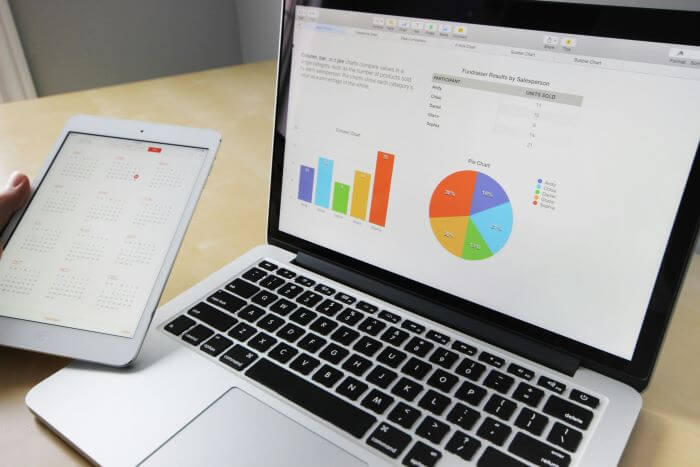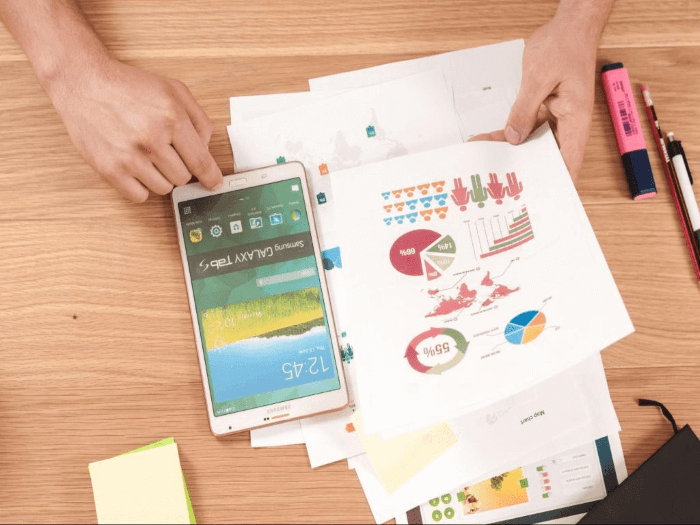In this article, readers will discover essential strategies to turn marketing analytics data into actionable insights. Here are 7 Tips on Getting The Most Out of Marketing Data.
The author emphasizes the importance of understanding customer data, satisfaction data, campaign data, sales data, competitors’ review data, and market research. The significance of segmentation, visualization, and continual experimentation in transforming raw data into profitable business decisions is highlighted.
Marketing data refers to any information or metrics gathered and analysed by marketing experts. Their purpose is to comprehend their target audience, assess the performance of marketing campaigns, and make informed decisions to attain their objectives.
Consumer behaviour is in a constant state of flux. Therefore, you should remain “on guard” to capture accurate customer data. Implement control measures during campaign optimisation by conducting A/B tests and keeping an eye on marketing performance indicators (KPIs).
Table of Contents
How To Turn Marketing Analytics Data into Actionable Insights
Have you ever experienced the sensation that your company possesses a valuable reservoir of customer information, yet it remains largely untapped? Rest assured, you’re not alone. We understand that grappling with an abundance of data can be a challenge. The key solution? Figuring out how to turn all marketing analytics into actionable insights for your business.
Undoubtedly, getting from raw data analysis to smart moves (when developing a brand strategy) is a bit of a maze. However, that’s where marketing automation solutions like Phonexa come in handy.
In this blog post, we’ll delve into strategies for navigating through the data overload and extracting gems that will steer your data-driven decisions in business. Additionally, we’ll focus on the role of lead distribution in successful digital marketing campaigns.
So, buckle up as we dive into 7 practical steps to help you turn website performance metrics into marketing insights for your company. Let’s get cracking!
What Marketing Analytics Gets Collected?

As we’ve been talking generally about valuable marketing data, let’s first define what information we mean here.
Marketing data refers to any information or metrics gathered and analysed by marketing experts. Their purpose is to comprehend their target audience, assess the performance of marketing campaigns, and make informed decisions to attain their objectives.
This data can originate from various sources. Let’s take a closer look.
| Customer data | This is all about your clients – their background, interests, preferences, you name it. Customer data is key to getting the lowdown on your buyers and prospects.
For example, if you discover that the majority of your buyers are males experiencing a midlife crisis from Rotherham, you can customise your brand strategy to resonate with this demographic. On the other hand, if your analysis reveals a strong interest in the intricate technical aspects of your product, you can highlight this angle in your marketing efforts. |
| Customer satisfaction data | If you want to sell, it’s worth keeping tabs on customer satisfaction data, so you can find out how your target audience is feeling about your business, goods, and services.
You can discern this by monitoring relevant metrics like the net promoter score (NPS), which asks customers how likely they are to give your business a shout-out. Acquire this data by shooting out surveys to your leads (customers). Then, you can take their feedback onboard and tweak your business game to keep on the up and up. |
| Marketing campaign data | This marketing data is all about your business performance metrics. With campaign data, you can track every lead and sale back to the exact campaigns that pulled them in to see which ones are really doing the business. Some of the stats bundled up in this marketing data package include:
Additionally, there is a boatload of key performance indicators (KPIs) tangled up with campaign data. However, the crux of it is setting up a lead distribution system that lets you link specific conversions to specific campaigns. It helps track viable strategies. |
| Sales data | When managing a business, the focus revolves around sales and revenue. It’s crucial to stay updated on the types of sales you’re generating and the amount of cash flowing into the business.
Ask yourself questions like:
Keeping an eye on this marketing data category helps you figure out how well your business performs. Adjust your sales approach by refining strategies for slower-moving products or services and emphasising those experiencing high demand. |
| Competitors review data | There are always other businesses out there vying for the same slice of the pie. You can track how their logo design, web design, or brand strategies are changing to follow the latest digital marketing trends.
With this scoop, you can run a SWOT analysis to size up your competitors’ strengths, weaknesses, opportunities, and threats. Then, you can tweak your own marketing strategy to mirror their strengths while capitalising on their weaknesses. |
| Market research | While monitoring various marketing data types, conducting comprehensive market research is essential. Stay updated on industry trends, and if you notice demographic shifts among customers, adjust your marketing efforts to ensure they remain targeted toward the relevant groups. |
Now, as you’ve gathered a lot of various but valuable marketing data, let’s see how we can turn it into actionable insights.
7 Tips On How To Analyse Marketing Metrics

The journey from marketing data to actionable insights is a bit of a rocky road. Overcoming these hurdles requires exceptional customer analytics services and marketing automation tools. Begin by establishing the right goals, and incorporate effective marketing analytics to streamline the process.
Measure The Right Things
Precision requires estimation. There is no universal solution; each business is unique and requires tailored handling to address its individual nuances.
Let’s say you’re at the helm of an online store. Here are some things you’d likely want to get a handle on:
- Which items are driving the most sales?
- Where are the leaks in your sales funnel (the places where visitors drop off)?
- Do customers switch between devices before making a purchase?
- What’s the ratio of product views to actual purchases for each item and category?
- Which landing pages need a makeover, and where are they accessed from?
You’ve got to anticipate what matters most for your business. It all kicks off with asking the right questions.
Ask Your Business Leaders The Right Questions
Make sure you address all your stakeholders’ queries. That entails delving into their hopes and hurdles by posing the right questions.
Here are some marketing data insights that might make a difference to your stakeholders:
- Pinpointing particular events and specific trends to back up your brand strategy
- Delving deep into the environment and competition, along with conducting market research
- Commercial insights and ROI figures
It’s effortless to lose track of time while delving into marketing data. Encountering “insights” that are either outdated or insignificant can be exceptionally frustrating!
So, make clear what your stakeholders actually want in terms of actionable insights.
Consider the Context of Your Data Set
Make sure you set the scene for the information you’re examining. Questions that put data into context might include:
- What’s the story behind these numbers?
- Do they carry weight?
- How do they impact the business?
- How was this data gathered in the first place?
Keep in mind that marketing data lacks significance without context and can lead you astray if misinterpreted.
Use Segmentation and Visualisation
To leverage your data effectively, opt for segmentation. By grouping visitors with shared traits, you can delve deeper into the analysis. The choice of segments to focus on should align with the specific business query you’re addressing.
Identifying these segments will greatly enrich your understanding of your customers’ behaviours. This intel can then inform your optimisation strategies.
Various digital marketing analytics tools and automation software offer a plethora of preset segments, and they give you the flexibility to tailor them to your specific business needs.
Furthermore, the way you present your data can significantly impact its effectiveness. Choose clear and concise visuals that enhance understanding rather than cause confusion. It’s crucial to weave a narrative around your data, incorporating the what, how, and why. This transforms your marketing data into actionable insights and drives profitable business decisions.
Build an Optimisation Plan
Utilise the “Define Measure Analyse Improve Control” (DMAIC) process to enhance your business operations. This method, rooted in Six Sigma principles, is directly applicable to your circumstances.
Adopting the ethos of continual improvement, we persistently strive to pinpoint and implement best practices. We aim to progress toward flawless solutions for inefficiencies and flawed processes.
The DMAIC process boils down to:
- Define the issue or hypothesis, identifying stakeholders and the scope of analysis.
- Measure pertinent data and conduct an initial analysis to detect irregularities.
- Analyse correlations and trends, utilising statistical and visualisation techniques.
- Make improvements based on insights and present various options for exploration.
- Control the changes by deploying (A/B) tests and monitoring key performance indicators (KPIs).
Hire Smart People
Surely, online tools and customer relationship software may gather data, but it’s the savvy minds who grasp the ins and outs of the business that unravel the actionable insights. You should collaborate with sharp-minded individuals to gather the right customer data.
They will help you craft data-driven marketing narratives with valuable insights for the business. It’s a win-win: working together with digital marketing specialists and utilising external web analytics services.
Do Experiments, Track Progress, and Refine Brand Strategy
Consumer behaviour is in a constant state of flux. Therefore, you should remain “on guard” to capture accurate customer data. Implement control measures during campaign optimisation by conducting A/B tests and keeping an eye on marketing performance indicators (KPIs).
Additionally, scrutinise the test results and utilise the findings to “polish” your digital marketing campaigns. For example, if a specific design on your landing page generates more clicks, stick with it for the entire campaign to maximise marketing outcomes. Repeat this process for all campaign components to identify the top-performing variations.
This approach allows you to use effective designs and chat funnels in customer interactions. What’s the result? Increased customer engagement and better lead distribution, conversions, and sales, as all your campaign materials have been tested and proven to resonate with your target audience.
Unveiling Actionable Insights With Marketing Analytics
Each of the strategies outlined above can assist you in honing your marketing plan for transforming marketing data into actionable insights and potential profits for your business. You might consider cherry-picking a couple of tactics and initially giving them a trial run. Discover what resonates the best in your industry, and then build on that success.
Join The Logo Community
We hope you enjoyed these 7 Tips on Getting The Most Out of Marketing Data.
If you would like more personal tips, advice, insights, and access to our community threads and other goodies, join us in our community.
You can comment directly on posts, access our community threads, have a discussion and ask questions with our founder Andrew.
If you’re looking to learn more about brand strategy, we highly recommend eRESONAID with our friend and acclaimed brand strategist and author Fabian Geyrhalter, it’s packed full of knowledge and insights you will need to learn to become a brand strategist or apply what you learn within your own business.
Author Bio
Olena Holubnyk is a copywriter at Phonexa. She finds inspiration in the dynamic landscapes of affiliate marketing and lead generation, recognizing the power of well-crafted words in driving engagement and conversion. Olena is focused on crafting captivating articles that resonate with diverse audiences. Her commitment to staying ahead in industry advancements reflects a dedication to delivering content that informs and inspires.


